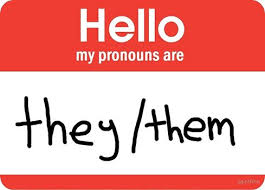 In Zoom’s new 5.7.0 version, there is now an option to add and manage your personal pronouns.
In Zoom’s new 5.7.0 version, there is now an option to add and manage your personal pronouns.
“Pronouns are an essential piece to many of our diverse users expressing themselves and respectfully referring to others. Some common examples of pronouns are he/him/his, she/her/hers, and they/them/theirs.
While pronoun sharing can be particularly important to LGBTQ community members, we also recognize that it enables our users to better share about themselves and be more respectfully treated on our platform.
In introducing the Pronouns feature, we hope this will help everyone feel better able to express themselves and respectfully address others, which ultimately leads to a stronger culture of connectivity and an improved communications experience.”
Read the full article and learn how it works>>>
For more information about pronouns, here are the resources from the IDEAs in Action website:
Talking About Pronouns in the Workplace
Increasingly, employees are entering the workplace with gender identities and expressions that may be different from what we most frequently think of when discussing gender. Gender expansive employees – those that do not self-identify as male or female – often challenge existing understanding and norms around gender. These employees may opt to use gender expansive pronouns such as “they, them and theirs” instead of the gendered “he, him and his” or “she, her and hers.”
 Respecting Pronouns Flyer
Respecting Pronouns Flyer
This two-page handout created by the Lambda Alliance covers how to lead by example, being an ally, creating a culture of inclusion and examples of pronouns.
One-Minute-for-IDEA: Respecting Pronouns
One-Minute-for-IDEA: Why Pronouns Matter
There’s More to Gender Than “Man” and “Woman”
From the Harvard Business Review, this podcast discusses the the workplace experiences of people who identify as trans, nonbinary, genderfluid, butch, or gender-diverse in some other way and gives advice to managers and peers on how to be respectful and supportive of gender-diverse colleagues.
